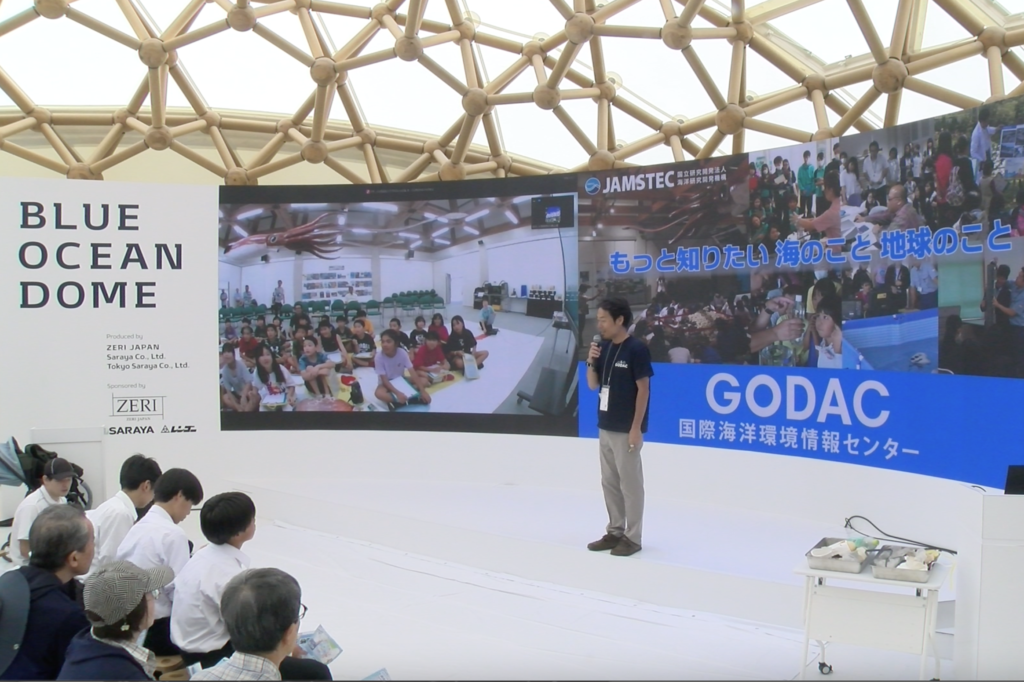
Wednesday, May 7th to Saturday, May 10th, we held workshops and lectures on ocean-related themes such as marine debris and the deep sea, in collaboration with the Japan Agency for Marine-Earth Science and Technology (JAMSTEC).
Learning about the marine litter problem
On Wednesday, May 7th, a workshop on the “Marine Plastic Waste Problem” was held, moderated by Kenzaro Sawano, a science communicator at GODAK (International Marine Environmental Information Center), with students from Kube Elementary School in Nago City, Okinawa Prefecture, also participating online. It was announced that there is research that if there is no change now, the amount of plastic waste floating in the ocean will exceed the amount (weight) of fish by 2050, and participants explored what solutions there are to prevent such a future. In the second half, JAMSTEC researcher Katsunori Fujikura took the stage and introduced JAMSTEC’s efforts to address the marine plastic waste problem. At the end, children were seen engrossed in making straps using microplastic waste.

Learning about marine biodiversity
On May 8th (Thurs), Mr. Sawano from GODAC continued to speak. He gave a lecture on “What is biodiversity?”, “How we benefit from biodiversity”, and what we can do to preserve the diversity of the ocean for the future.
After the lecture, a workshop was held where participants searched for traces of coral, shells, and other living creatures in the sea sand brought from Okinawa. They transferred the traces they found in the sand into tubes and made their own original straps.
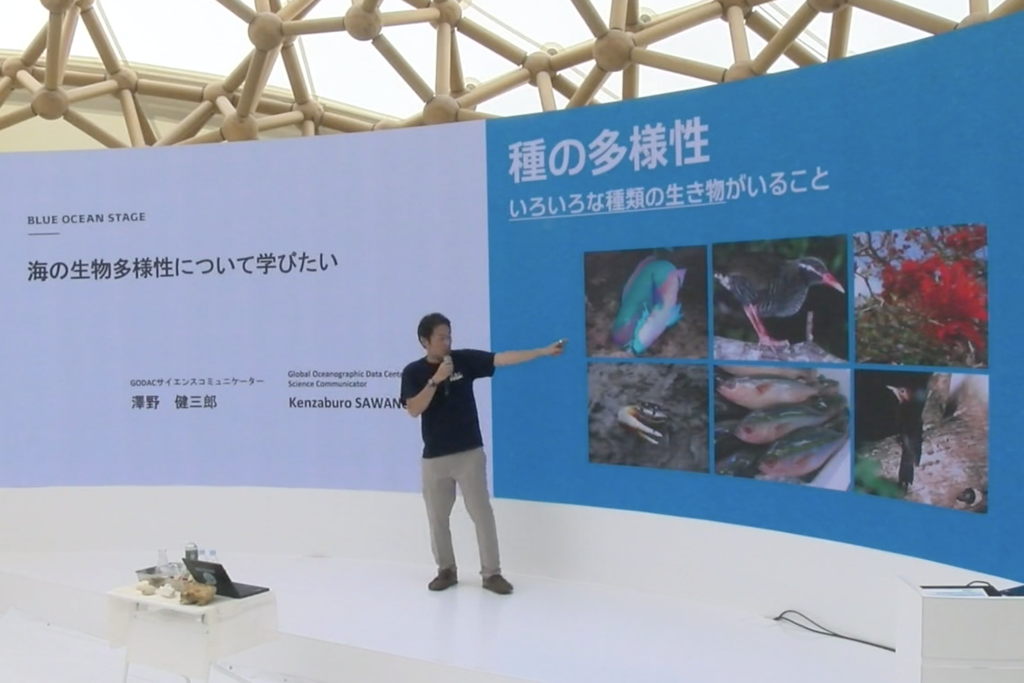
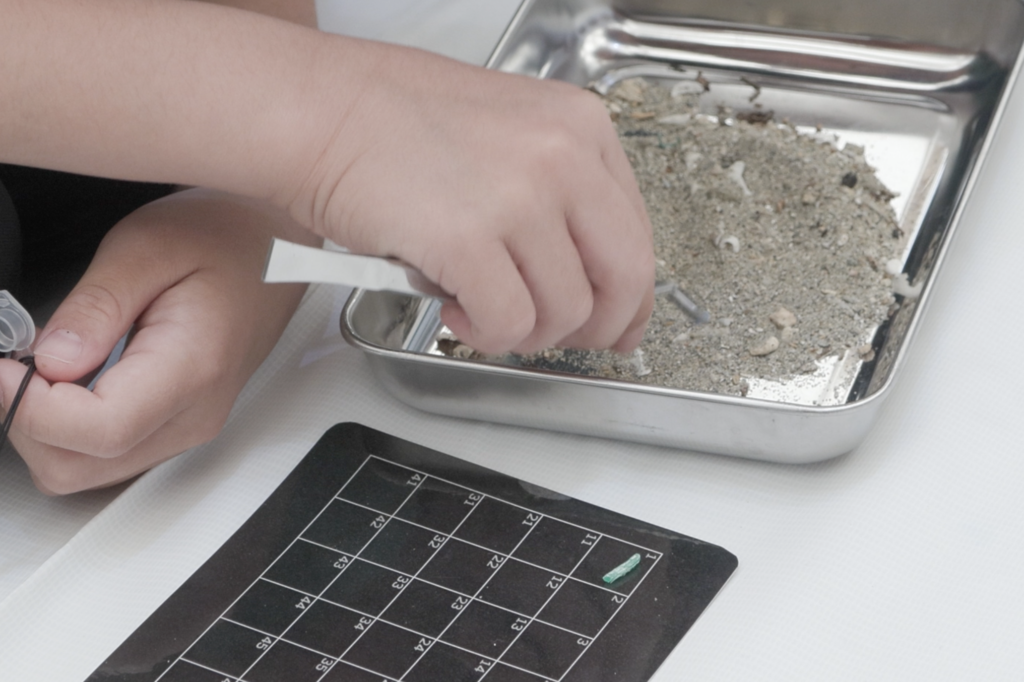
Learning about the deep sea
On Friday, May 9th, a workshop on the theme of “The Deep Sea” was held, moderated by GODAK Science Communicator Katsumi Kodera. Following on from the 7th, students from Nago City Kube Elementary School also participated online.
In the workshop, quizzes such as “How many meters is the deepest part of the ocean?” and “How many meters is considered deep sea?” were given, and a water pressure experiment device was used to give a hands-on introduction to the effects of water pressure in the deep sea. This gave children an easy-to-understand explanation of what the deep sea is like.
In the second half of the event, Fujikura, who also conducts deep-sea research at JAMSTEC, took to the stage. He explained the cutting edge of deep-sea research and the mysterious creatures that live there. The children who participated commented, “I was glad to learn about the deep sea,” and “It was interesting because it was similar to outer space,” making it a time full of learning and discovery.
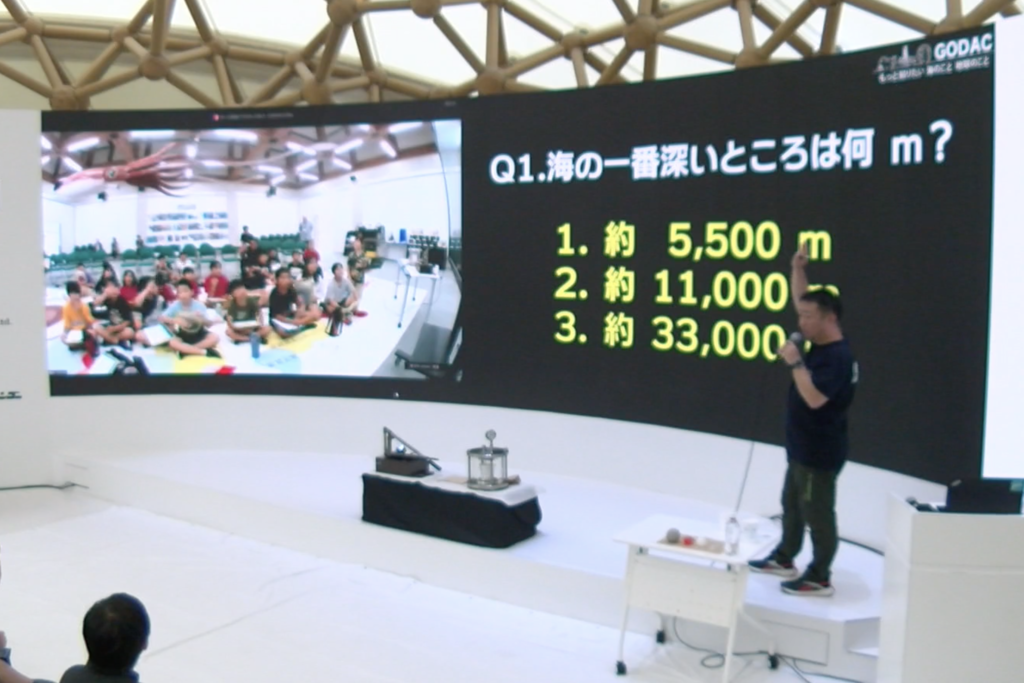
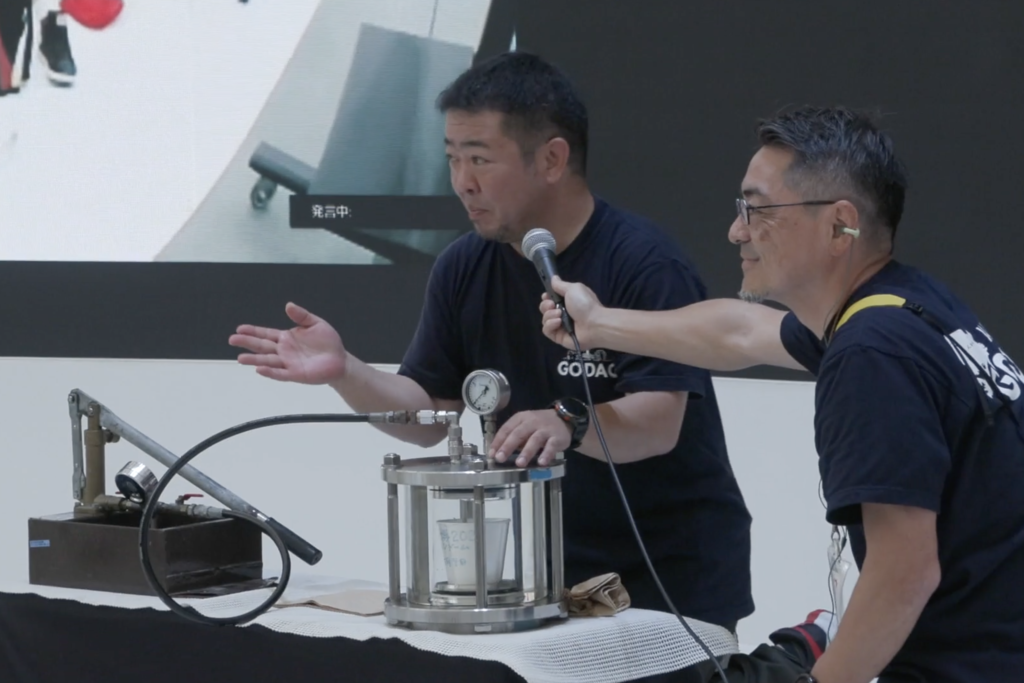
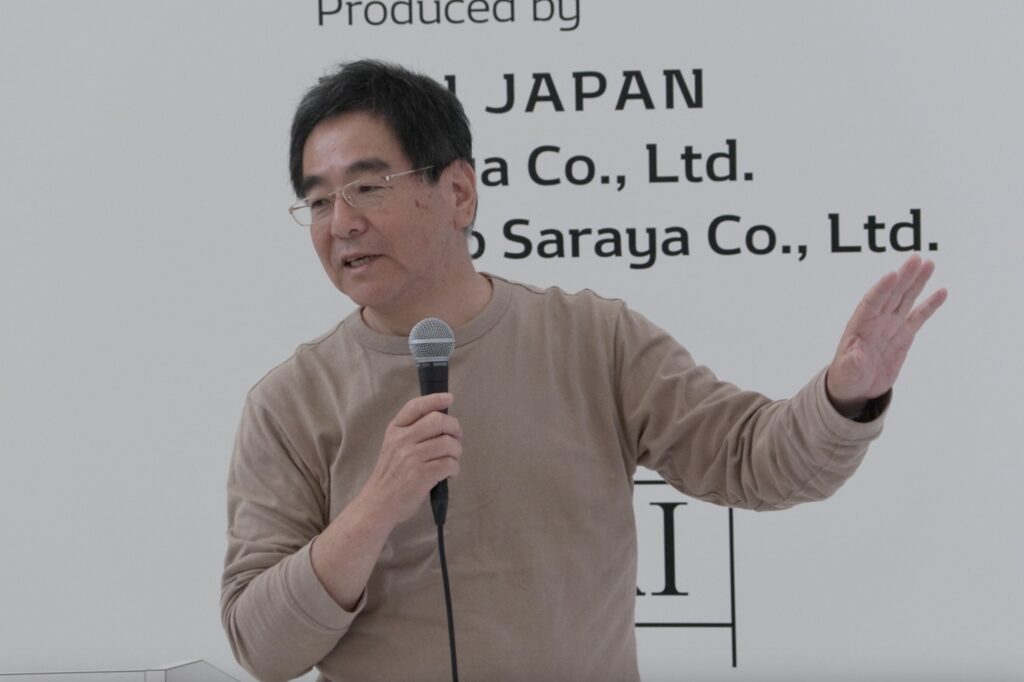
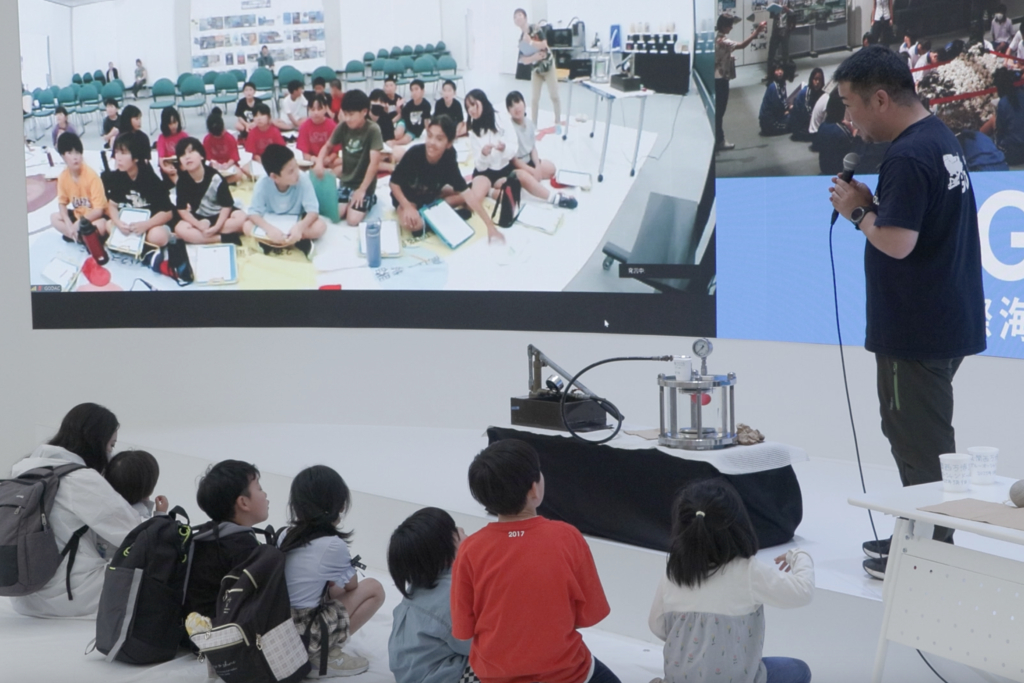
Practice and development of marine STEAM education
On Saturday, May 10th, from 13:00, a talk session was held on the theme of “Practice and Development of Marine STEAM Education” moderated by Morio Ichihara, Director of the Marine STEAM Promotion Division of the Japan Agency for Marine-Earth Science and Technology (JAMSTEC). STEAM education is an education that aims to develop the ability to discover and solve problems by utilizing various information, regardless of the framework of humanities or science, as society changes rapidly due to technological advances. JAMSTEC has started the “Marine STEAM Education” project in earnest from 2024, and has developed STEAM teaching materials based on the curriculum guidelines using images and videos obtained from previous marine surveys, etc., and implemented them in schools. In this talk session, Hirofumi Yokouchi, a teacher at Hachinohe Municipal Fukiage Elementary School, took the stage to introduce examples of practice at Fukiage Elementary School. Masataro Oiri and Kotaro Yoneyama of Taki Corporation IGI also took the stage to explain the importance of branding in education projects.


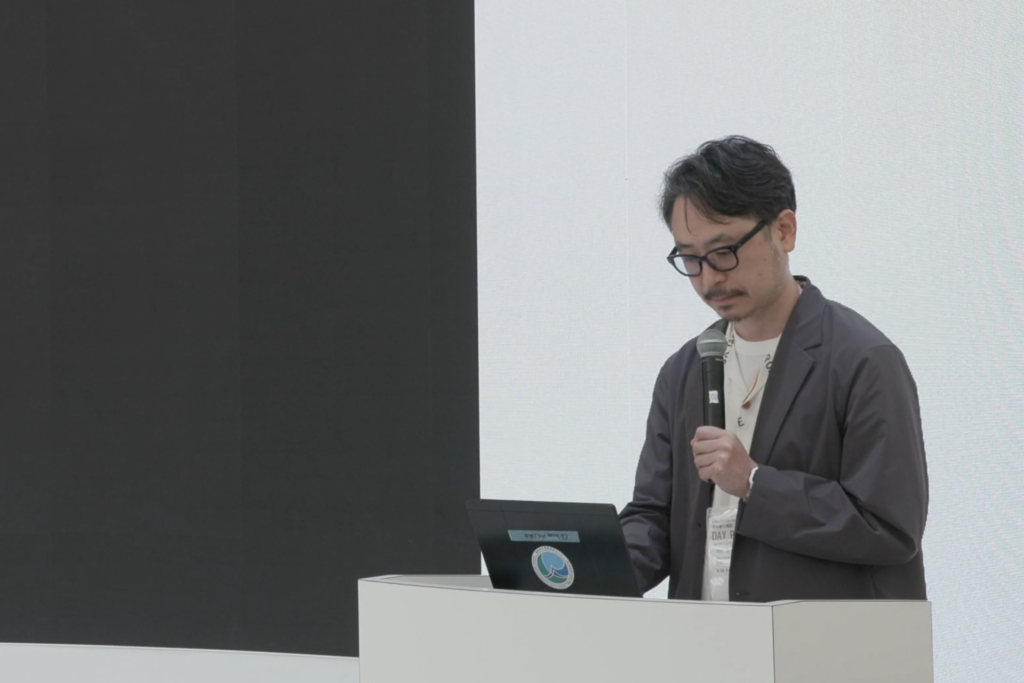
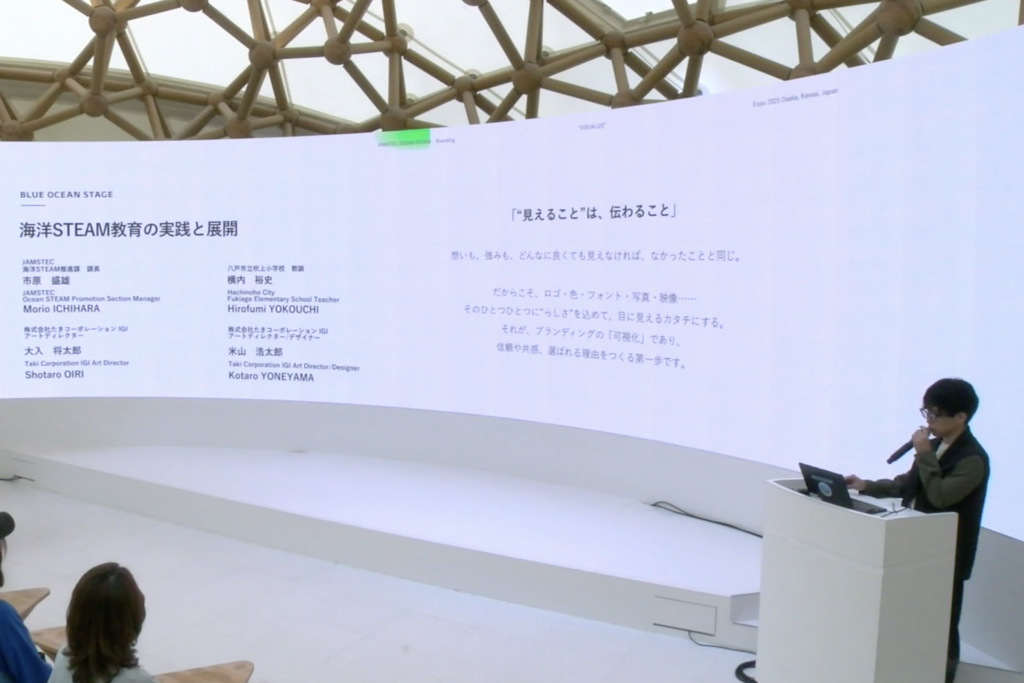
Talk event “Let’s talk with marine researchers”
At 3 p.m. on Saturday, May 10, Takeshi Doi, a senior researcher at the Japan Agency for Marine-Earth Science and Technology (JAMSTEC), gave a lecture. Several talk topics, such as “Can the ocean help? The threat of global warming” and “The ocean crisis! What are the SDGs and the three major stresses?” were displayed on the stage, and he explained the topics that interested the visitors on the spot. The lecture proceeded in an interactive format, with flexible answers to questions about the ocean that were not on the talk topic. It was explained that the ocean has the power to absorb heat and carbon dioxide, and plays a role in slowing down global warming, and that if global warming continues at this rate, the ocean’s own power will not be able to support it, and we will reach a point of no return, which will have a serious impact on the marine ecosystem. It was an hour of learning more about ocean issues.
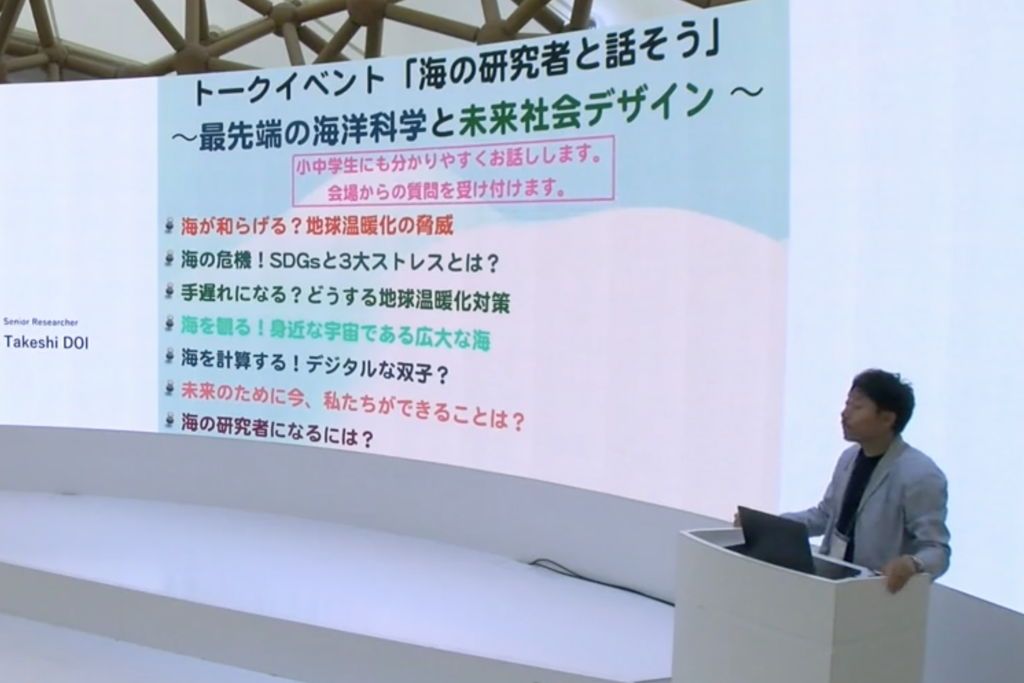
▼The event will be available to watch on YouTube’s BLUE OCEAN DOME official channel.
【#022】Learning about the marine litter problem (ZERI JAPAN / Japan Agency for Marine-Earth Science and Technology (JAMSTEC))
【#023】 Learning about marine biodiversity (ZERI JAPAN / Japan Agency for Marine-Earth Science and Technology (JAMSTEC))
【#024】Learning about the deep sea (ZERI JAPAN / Japan Agency for Marine-Earth Science and Technology (JAMSTEC))
【#025】Practice and development of marine STEAM education (ZERI JAPAN / Japan Agency for Marine-Earth Science and Technology (JAMSTEC))
【#026】Talk event “Let’s talk with ocean researchers” (ZERI JAPAN / Japan Agency for Marine-Earth Science and Technology (JAMSTEC))